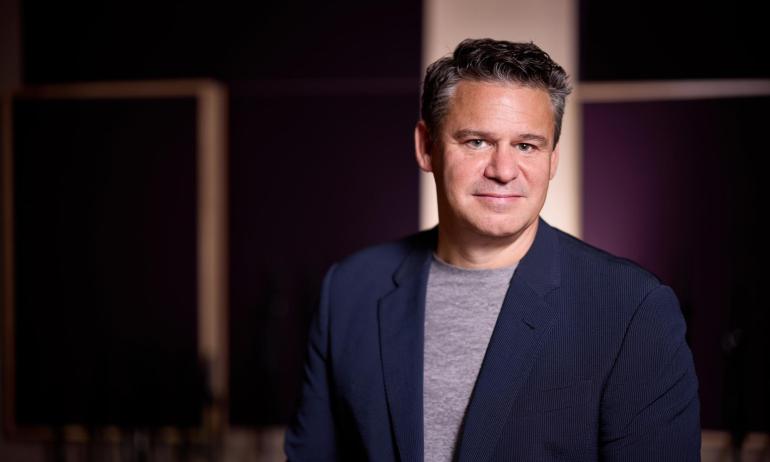The Performance is a Work of Art

Joanne Brackeen
For Joanne Brackeen, the September 11 terrorist attack at the World Trade Center hit very close to home. Her apartment is only two blocks from ground zero. Fortunately, she was in Boston teaching at Berklee at the time of the destruction. She spoke with me the day after the incident and seriously wondered if and when she could return home. "I saw my building on the TV and it may be okay, but at this point, you can't go beyond 14th Street,” she said. "I hear that you can't go inside the building so I don't have access to my music, clothes, and, worst of all, my passport. You can't fly out of New York without a passport, and I have a tour coming up next week.”
Brackeen has been an in-demand jazz pianist for over 40 years and has toured Europe 75 times, and has played in Korea, Japan, China, and throughout America. Possessing the resourcefulness of a veteran performer, I am confident that she will find a solution so that her work can continue. Her weekly schedule includes three days at Berklee, an ensemble class at the New School in New York, and as many gigs as she can fit in.
"I don't have any idea how many nights per year I play,” she said. "I keep busy. If I am not playing, I am preparing. I like to do concerts where there is time for preparation. I like it to be really musical and for the music to evolve so that the performance is a work of art.”
Brackeen's attention to detail and her high performance standards have enabled her to become a major figure in the world of jazz piano. Born in Ventura, California, she started playing piano at a young age and was largely self-taught. "I used to listen to boogie woogie and classical piano, but I played mostly by ear,” she recalled. "I had a few teachers, but by the time I was 14 or 15, I couldn't find a teacher that I liked, so I just played and hung out with the guys who played. After high school, I received a scholarship to attend the Los Angeles Conservatory. I went there for a few days, but they didn't offer any jazz courses. The things they were teaching were things that you would know if you were a pianist who had played for a long time. So I didn't continue.”
She had gleaned much along the way by listening to and imitating the piano stylings of Frankie Carle, but bebop is what really grabbed her attention, specifically the music of Charlie Parker. "I liked anyone who played with Parker, so naturally, I transcribed a bunch of Bud Powell's solos. That was how you had to learn back in the '50s.”
Brackeen started playing clubs in Los Angeles in the late 1950s working with such jazzmen as Dexter Gordon, Harold Land, Charles Lloyd, Bobby Hutcherson, and others. She married saxophonist Charles Brackeen in the early 1960s and had two daughters and two sons. Finding the jazz scene in Los Angeles to be less vital than the scene in New York, the Brackeens headed east in 1965.
Once there, she found ready acceptance and good work. Many musicians with whom she had played in Los Angeles were also relocating to New York. She took a steady job at the Surf Maid, a club across the street from the Village Vanguard. It was a well-known haunt for established jazz artists who noted Brackeen's abilities. She landed gigs with David Liebman and Woody Shaw that same year. In 1969, she became the first female member of Art Blakey's Jazz Messengers, a gig she stayed with until 1972. She recalls with fondness that Blakey used to refer to her as his "adopted daughter.”
After leaving the Messengers, she worked with Joe Henderson and Stan Getz and began releasing records as a leader. In addition to her burgeoning reputation as a player, Brackeen was increasingly recognized as a gifted jazz composer. Stan Getz regarded her as one of the most original composers to come through his group. To date, Brackeen has penned over 85 compositions, including works for string quartet and string quintet. "I have been writing music all of my life,” she said. "I write what I hear, and I am subject to hearing almost anything.”
She has released 25 albums as a leader. Typically, her sessions showcase her hard- swinging, rhythmically agile piano lines against the backdrop of her own music and standards. The tracks on her latest CDs, Pink Elephant Music and Popsicle Illusion, display the same variety as her live performances, spotlighting her in quintet, quartet, and trio settings, and as a solo pianist.
"I love all musical settings equally whether it is solo, trio, quartet, etc.,” she said. "If I play too much of one combination, I start wanting to do another. I like the intricacy and intimacy of a small group more than a big band because there is more room for spontaneous creativity. Right now, that's my preference, but who knows? It might change.”
Brackeen has added to the Berklee piano faculty. She currently teaches private students, a masterclass, and an ensemble. She became a part-time faculty member in 1994 and enjoyed it so much that she recently signed on as a full-time associate professor.
"What's fun about teaching at Berklee is that the curriculum is very organized and there is a new wave of students coming through who are at a high level in at least one area of their playing. You just have to fill in a little of this and that. I feel really open as a teacher. Some students know certain things, but they don't know how they know them. It is easy for me to teach them because that's how I learned.”




